A few years back I joined a fishing club here in Utah. We did club tying nights, and a group of three or four of us usually fished together every weekend. On one Sunday, we decided to fish a stream that’s almost entirely pocket water for its 20-some-odd mile length. A few of the guys tied on indicator rigs and one went with a lone dry fly.
I tied on a Chubby Chernobyl, a Frenchie, and a zebra midge. One of the guys looked at my rig and jokingly said, “Hey look! It’s Triple-Threat over here!”
The nickname stuck for years.
While the fishing club is defunct these days, the odd glances and hard time I get for fishing three flies hasn’t changed. Where it’s legal, a dry-dropper-dropper is my go-to rig for trout. Unless there’s a stellar hatch, or I know the fish want to chase big streamers, you’ll find me throwing three flies on any trout river. Hell, I’ve even done it while fishing for resident dolly varden on Kodiak Island.
I’ve been known to have my clients fish three flies, too. Earlier this summer, I guided a group of four guys, and each of them balked when I handed them rods strung up with three flies. They weren’t the first clients to be skeptical of my approach, and I know they won’t be my last.
But that trip – and reflecting on the Triple Threat nickname – got me thinking that most anglers may not be familiar with the idea of a three-fly rig. And given how successful the rig has been for me, I figured it’s worth sharing.
I want to preface this by saying I know I didn’t come up with anything revolutionary here, nor do I think my three-fly rig makes me somehow unique. Fishing this way, though, isn’t something that I think most anglers do, or even consider, and that makes it worth discussing.
Why three flies?
Go stand on the banks of any major river in America, and I’ll bet you a dozen flies that one of the first five drift boats that pass during peak season have at least one angler throwing an indicator rig.
I’m not bagging on indicators, but I am going to question the efficacy of that style of fishing. How often have you been on a river, fishing to risers in a slack bit of water, only to have someone high-hole you with a bobber rig? The trout quit feeding on top, and if you were there to fish dries, you’re suddenly out of luck.
While indicators have a time and a purpose, they’re largely counter-productive when you’re on a river.
For starters, as Lance Egan, Devin Olsen, and Gilbert Rowley documented in their film Modern Nymphing, you simply don’t see a lot of takes when you tie on an indicator. Trout have to really commit for the bobber to move, and trout are notorious for being finicky, subtle creatures.
Swap that bobber out for a dry fly, though, and suddenly you’re seeing a lot more of the takes on your bottom two flies. And, you’ve replaced your indicator with something that also catches fish. I can’t count how many times I’ve watched trout try to eat my indicator, and trying to slip-set on that kind of take rarely works out in my favor.
Speaking of trout eating dry flies – another reason to fish the three-fly rig is that it allows you to cover more of the water column, and imitate more stages of an aquatic insect’s lifestyle. In short, you’re able to present more options to trout, which increases your odds of catching fish.
Consider, for example, a rig featuring a PMD, Hare’s Ear, and RS2. With those three flies, you’ve covered the major life stages of a mayfly – the dun, pupa, and emerger. Trout that are focused on the easy pickings will likely snag the Hare’s Ear, while the fish sitting higher in the water column are more likely to eat your dun or emerger.
The rig
Rigging up for three flies is straightforward. I start with a larger dry fly – usually a size 14. Unless I go with an elk hair caddis, I opt for a parachute fly of some kind. I love how they float, the silhouette against the top of the water, and how easy they are to see.
Next, I tie 18-24 inches of tippet off the bend of the hook. One mistake I see a lot of my clients make is not using enough tippet between flies. Remember, you’re not only trying to get your flies down to where the fish are – you’re fighting the current, too. 18-24 inches is a good general ballpark that works on all but the most shallow or mossy of rivers.
It should go without saying that your nymphs need tungsten beads and lead tied around the shank. I don’t use split shot unless I have no other choice, because it chews up tippet and decreases your ability to feel a fish take your droppers.
I like to keep the space between my second and third fly shorter than between my dry and first dropper. The reasoning behind this is that the second fly might get the attention of a trout on the bottom – and then the bottom fly floats along, and that’s the one in the most convenient spot for the fish to eat. A 14-16 inch length of tippet should be more than adequate.
A few notes on fishing
Most folks worry about getting tangled when fishing three flies. That’s a valid concern, but it doesn’t happen as often as you might think. Yes, I spend more time untangling flies than if I just fished one or two, but not disproportionately so. The key is to give yourself a bit more time on your cast.
It’s a lot like fishing streamers, or heavy nymph rigs. That extra weight means your rod slows up, your loop opens, and you’re waiting just a bit longer on each casting stroke for your loop to unfurl. Take that same concept to fishing the dry-dropper-dropper rig, and you’ll be in business.
I’d also recommend using nothing smaller than 4x down to your first fly. A good 4x leader is thick enough to help turn over what ends up being a 12-13 foot leader, when all your flies are tied on.
The dry-dropper-dropper rig is also a deadly way to approach pocket water. Casting off the tip of your rod so that the flies land at the top of a pocket, lifting excess line off the water, and keeping a tight line between you and your dry fly, will ensure the best drift. A few of my favorite streams here in Utah are almost exclusively pocket water, and the dry-dropper-dropper rig always produces in that type of water.
Finally, I wouldn’t worry about your tippet sliding off the bend of the hook if you use barbless flies, or crimp the barbs down yourself. I made the switch over to barbless a year or so ago (it’s so much easier to remove barbless flies from fish, and myself, when guiding clients) and haven’t once had a section of tippet slide off the end of the hook.
Fishing a dry-dropper-dropper might seem like overkill, and I suppose in some ways it is. But it’s an incredibly effective way to cover as much of the water column and aquatic insect life cycle as possible. It won’t win you any points with the dry fly purists among us, but you’ll probably catch a few more fish than them.




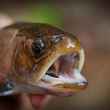
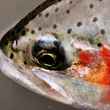



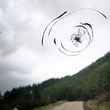
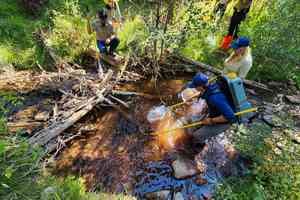


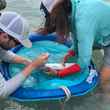
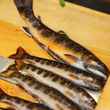
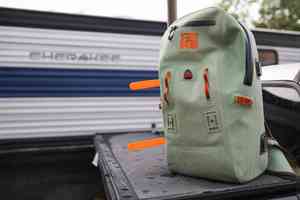
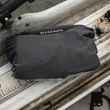
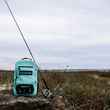

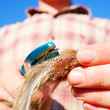




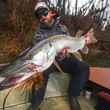
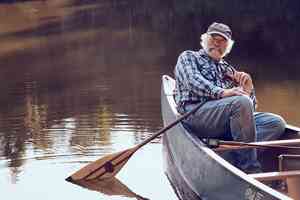




Comments
Rev Graham Crawford replied on Permalink
Three and even four fly rigs have been common in Scotland for years. Loch Even was famous for 4 fly rigs using size 18 double hooks back in the 1960's. I always use them precisely for the reasons you have mentioned.
J. Melzer replied on Permalink
Ok, dry dropper is very effective and preferable to slinging bobbers. But careful with the three flies. In Montana we are allowed only two flies and in British Columbia only one.
So read the regs. And one more thing, the tippet does sometimes slip off the bend of a barbless hook - at least my tippet has. Thanks for the good article.
Roger Stewart replied on Permalink
Thanks for a great explanation of this technique. Recently fished the South Fork for three days and the guide used the dry-dropper-dropper two of the three days. Caught fish on all three flies. A bit more challenging to cast but also fun to fish. I hope we see more of this type of article in the future.
martin trafford replied on Permalink
fished very similair method for a good few yrs in UK,with great success, also in N.Z.the kiwi rig' on larger stillwater lakes and deeper rivers excellent results.
Glenn Dotter replied on Permalink
Good article. I have been flyfishing for 60 years and have use 3 fly rigs since day 1 when a guy by the name of Dick Rader set me up on the Shohola creek in NE PA with 3 wet flies. They were all on droppers not tied to the previous hook. As I got older and lazier, I tied my rig to the eye of each hook. I tried the bend of the hook, but didnt think it gave life to the flies. By tying to the eye, each fly is able to wobble as it floats. I have use dry droppers and 3 nymph indicator rings and 3 nymph no indicator. If you pay attention to an indicator, you will see strikes. Usually it is the slight slowing. When I started out 60 years ago, we never heard of indicators and largely use wet flies. So as the writer says and I generally, the moral to the story is 3 is better than1 or 2, but be flexible you have to try different tactics. My dad and Dick Rader were the 2 best fisherman I knew. If something wasnt working, they were willing to try something else. But I remember their 3 favorite rigs were Light Cahill, Black Gnat, and March Brown.
Brett A. replied on Permalink
Interesting article. I myself have never even attempted a dry with dropper set up for fear of getting tangled let alone what you're using. I'll try it someday I'm sure, but I want to ask you this. What knot are you using to tie at the bend of the hook?? I wish you would have shared that detail. Thanks for sharing interesting technique.
Chad Shmukler replied on Permalink
A simple improved clinch knot works just fine at the bend of the hook, Brett.
Don't be too intimidated by tangles. Yes, you might want to avoid a 3-fly combo until you've gotten your feet wet with a 2-fly combo like a dry-dropper, but don't let tangles keep you from fishing these rigs. Slow your cast down a bit and let you loops open a bit wider, and you should avoid most tangles.
Steve replied on Permalink
Good article, I recently just started using a double dry dropper. I'm stoked to attempt the trifecta!
JW replied on Permalink
Good article. Would adding a split shot clamped on 10 inch +/- tippet after last fly, but in front of a triple surgeons knot? It seems it would keep wet droppers down, but not on bottom of river. JW
horm replied on Permalink
Just a minor note but technically mayflies don't have a "pupal" stage of their lifecycle. The pupae is an intermediate stage between a larva and an adult, and of the major aquatic invertebrates caddis are the only ones that exhibit a "complete" metamorphosis with that portion of the lifecycle. Mayflies and stoneflies exhibit what is called incomplete metamorphosis, meaning they actually skip the stage as a pupae entirely. Immature mayflies and stoneflies therefore are simply known as nymphs, and not referred to as either larva or pupa since they don't undergo that transformation.
Rak replied on Permalink
I tie my own fies. Any flies I will use for hopper dropper rigs all have a small loop of mono added in the tail area. Different size mono for different size flies. Tie tippet on loop and drooper on other end. Does not seem to affect hook ups.
Bw replied on Permalink
Thanks for the great read. My question is... How do you keep your dry fly from sinking with 2 weighted flies behind it? Seems like a size 14 caddis wouldn't stay up very well.
Pages